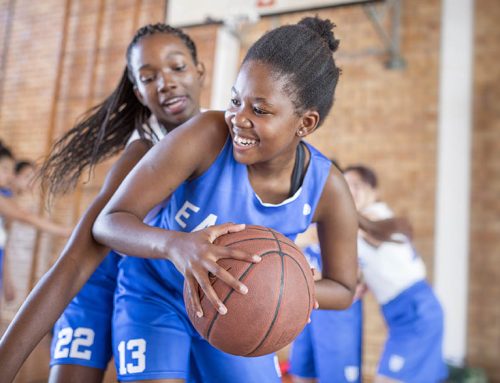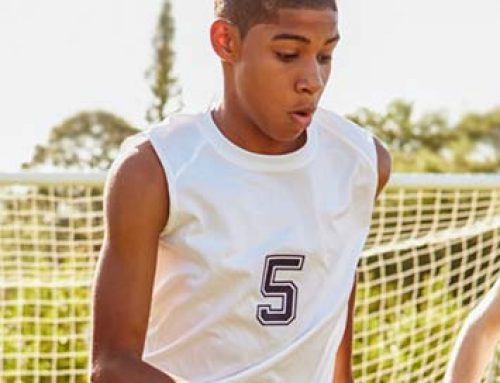Staying Safe When Exercising Outdoors for Older Adults
You’ve made a plan to be more active, and you’re ready to go outside and get started. But before you do, make sure that you can exercise safely in your neighborhood. Here are a few tips that can help you stay safe as you get moving.
Think ahead about safety.
- Carry your ID with emergency contact information and bring a small amount of cash and a cell phone with you, especially if walking alone. Stay alert by not talking on the phone as you walk and keeping the volume low on your headphones.
- Let others know where you’re going and when you plan to be back.
- Stick to well-lit places with other people around.
- Be seen to be safe. Wear light or brightly colored clothing during the day. Wear reflective material on your clothing and carry a flashlight at night. Put lights on the front and back of your bike.
- Wear sturdy, appropriate shoes for your activity that give you proper footing.
Walk safely in rural areas.
- If possible, walk during daylight hours.
- Choose routes that are well-used, well-lit, and safe. Choose routes with places to sit in case you want to stop and rest.
- Stay alert at all times. If you’re listening to music as you walk, turn down the volume so you can still hear bike bells and warnings from other walkers and runners coming up behind you.
- Always walk facing oncoming traffic.
- Walk on a sidewalk or a path whenever possible. Watch out for uneven sidewalks, which are tripping hazards.
- Look for a smooth, stable surface alongside the road.
Walk safely in urban areas.
- If the road has guardrails, see if there’s a smooth, flat surface behind the barrier where you can walk. If you need to walk on a paved shoulder, stay as far away from traffic as possible.
- Watch for bridges and narrow shoulders.
- Cross at crosswalks or intersections. Jaywalking increases your risk of a serious accident. Pay attention to the traffic signal. Cross only when you have the pedestrian crossing signal.
- Never assume a driver sees you crossing the street. Try to make eye contact with drivers as they approach. Before you start to cross a street, make sure you have plenty of time to get across. Rushing increases your risk of falling.
- Look across ALL lanes you must cross and make sure each lane is clear before proceeding. Look left, right, and left again before crossing. Just because one driver stops, don’t presume drivers in other lanes will stop for you.
- Check out city parks. Many parks have walking or jogging trails away from traffic.
Bicycle Safety for Older Adults
Riding a bicycle is not only a fun family activity, it’s also a great way to exercise. Some people even use their bicycle to commute to work, go to the grocery store, or visit friends and family. When you’re out and about on your bike, it’s important to know how to be safe.
For more information about biking safely, visit the National Highway Traffic Safety Administration.
Tips for Exercising in Hot Weather
Many people enjoy warm-weather outdoor activities like walking, gardening, or playing tennis. Make sure to play it safe in hot weather. Too much heat can be risky for older adults and people with health problems. Being hot for too long can cause hyperthermia—a heat-related illness that includes heat stroke and heat exhaustion.
If you want to be active when it’s hot outside:
Tips for Exercising in Cold Weather
You can exercise outdoors in the winter, but take a few extra steps to stay safe before braving the cold. Exposure to cold can cause health problems. Or do other outdoor activities when it’s cold outside:
- Check the weather forecast. If it’s very windy or cold, exercise inside with videos online and go out another time.
- Watch out for snow and icy sidewalks.
- Warm up your muscles first. Try walking or light arm pumping before you go out.
- Pick the right clothes. Wear several layers of loose clothing. The layers will trap warm air between them. Avoid tight clothing, which can keep your blood from flowing freely and lead to loss of body heat.
- Wear a waterproof coat or jacket if it’s snowy or rainy. Wear a hat, scarf, and gloves.
- Learn the signs of hypothermia.
For More Information About Exercise and Physical Activity
Centers for Disease Control and Prevention (CDC)
1-800-232-4636 (toll-free)
1-888-232-6348 (TTY/toll-free)
cdcinfo@cdc.gov
www.cdc.gov
This content is provided by the National Institute on Aging (NIA), part of the National Institutes of Health. NIA scientists and other experts review this content to ensure that it is accurate, authoritative, and up to date.
Content reviewed: April 02, 2020






Leave a Reply